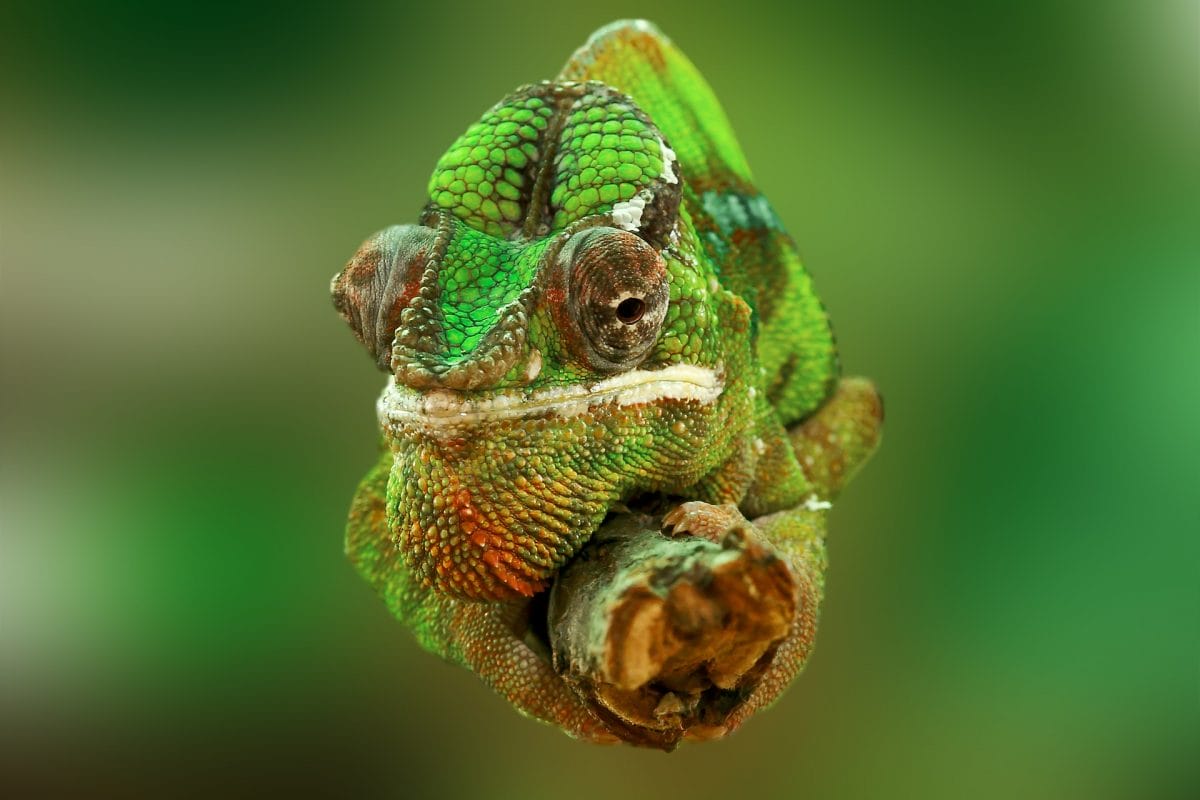Always Part of the Story
The Access Advisory Group is a diverse group of individuals with lived experiences of disability. We play an important role in the Horniman. We have made this gallery accessible to more people.
Museums are now becoming more accessible but too often disabled people aren’t visible. We set out to change that with this display. We did our research in the museum collections to bring together this collection of objects.
Some objects challenge assumptions but some reinforce stereotypes.
Some objects in the collection show negative depictions, for example that disability is caused by upsetting a spirit, or something that needs to be cured.
Many of the objects we found depict physical disability. It was harder to find objects that show hidden disabilities. Many of the objects are depictions of Disabled people but are not self-representations.
You can’t make assumptions about which objects are about disability, because all objects can tell these stories.
Disabled people have always been part of the story and played a role in many parts of community life but their voices have often been excluded. There have been many assumptions about what people can or can’t do when really it’s up to individuals how they live their lives.
We all have many identities and play many roles. Don’t judge a book by its cover…
These objects and our responses show that the world can be experienced and understood in many different ways. We recognise and respect this.
Behind the scenes film
Learn about how the Access Advisory Group worked with the Horniman to develop their display.
About the objects
See some of the objects chosen for the display, and read why the group chose them:
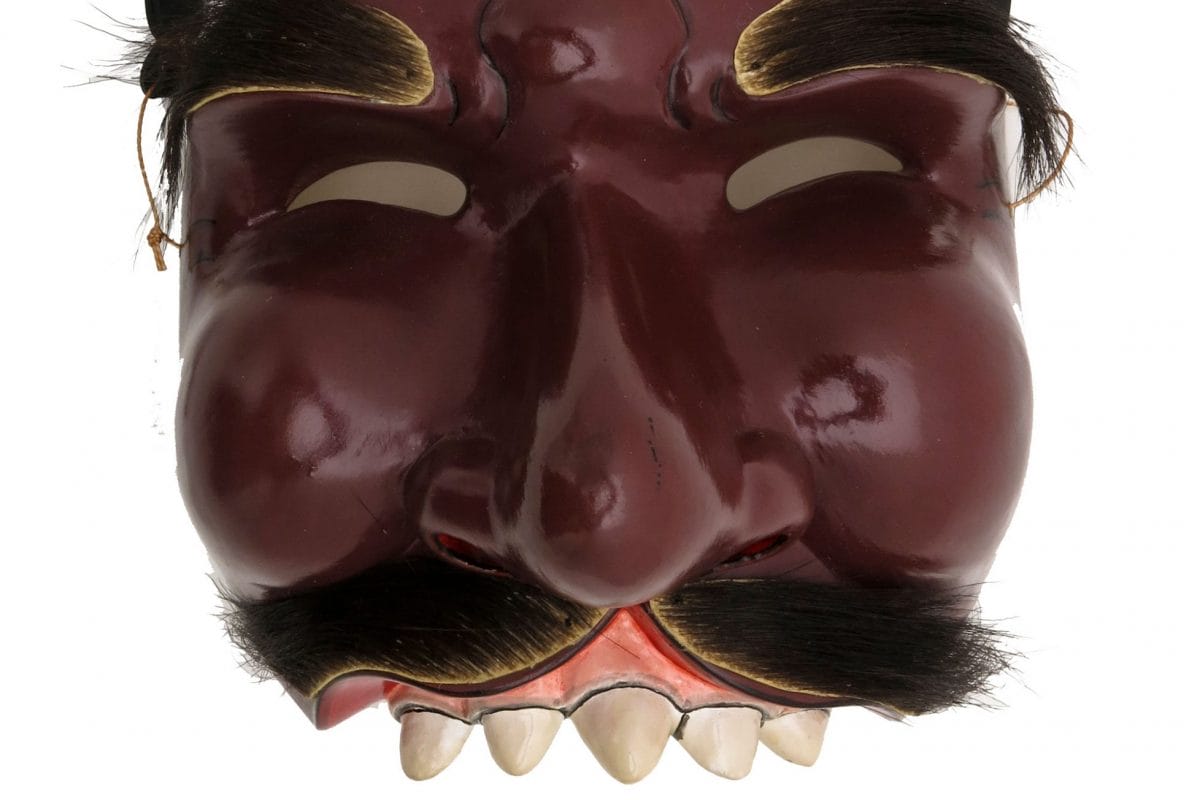
Carved wooden half mask of Cungih with face painted brown, cleft lip and palate. No lower jaw. Narrow curved apertures for eyes. Moustache and eyebrows are made of animal skin and hair. Secured when worn by a band of black rubber is tied with string which passes through a hole in each side of the mask.
Perspective:
Some of the museum collections talk of a medical model of disability – where it has been caused by upsetting a spirit and must be cured. In a social model, disability is about how a society is organised and removing the barriers that restrict life choices. It’s about appreciation of everyone’s different skills and abilities.
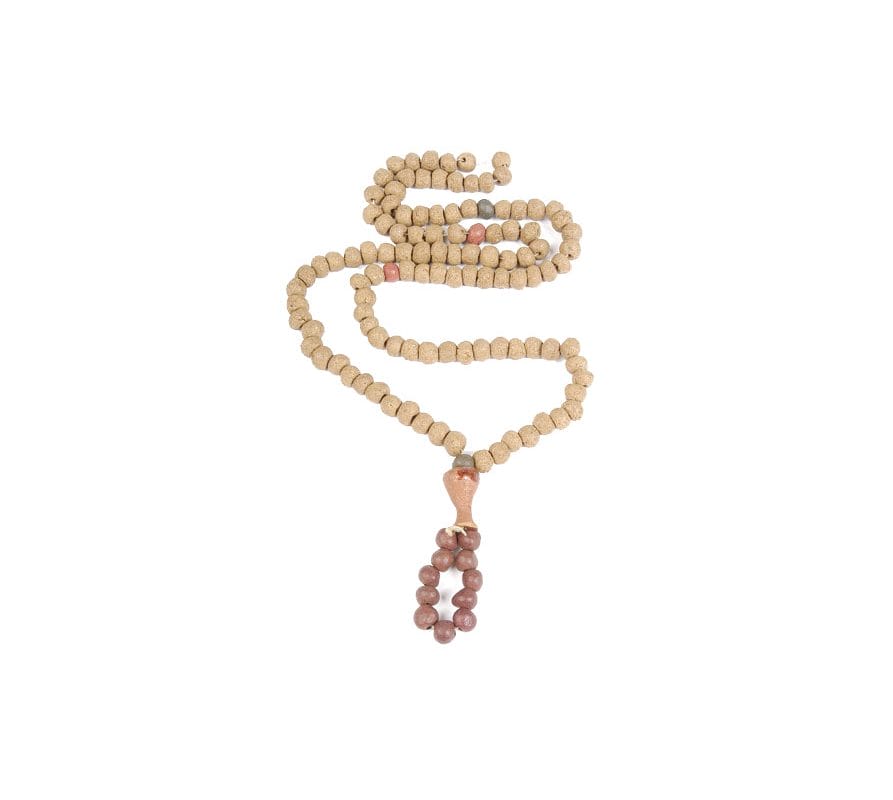
Buddhist rosary comprising roughly spherical shaped beads made from a compound of straw and other materials with tiny fragments of flint. Could possibly be animal dung with flint and other fragments from the ground. Some beads are coloured. Label: Red Church Missionary Society 'BUDDHIST ROSARY, WHICH / WAS THE PROPERTY OF A / BLIND TAOIST PRIEST.'
Perspective:
"Blind Buddhist priest’s prayer beads tell us that we were/are revered as spiritual leaders." Julia
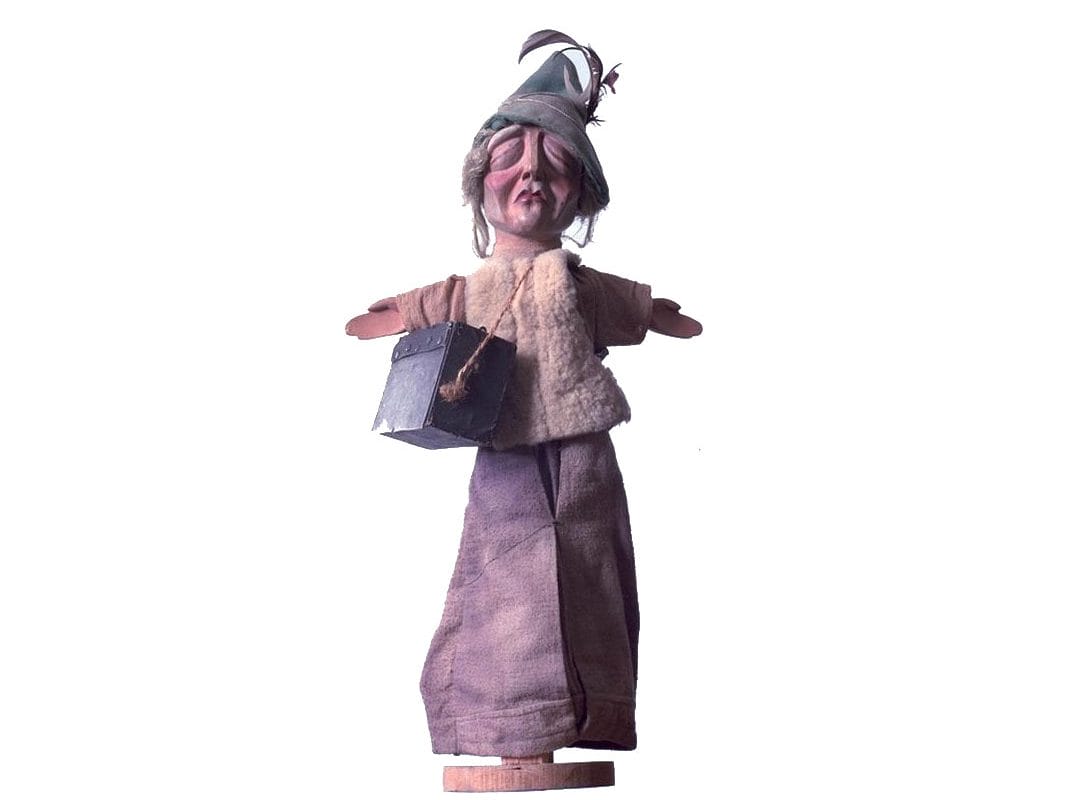
Glove puppet in the form of 'Musicien Aveugle' (blind musician), with two painted wooden hands and a head with vegetable fibre hair. The puppet wears a green hat decorated with feathers, a purple skirt, a brown shirt, and a sheepskin tabard. It is mounted on a wooden stand.
Perspective:
People might have underlying assumptions about what people can or can’t do – when really it’s up to individuals how they live their lives. We all have many identities and roles.
"Lots of different cultures have fixed ideas about how can a disabled person play a positive role in society – [being a musician, working in a factory]. It’s up to them how they want to live their lives. It is unhealthy not to have choice, disability shouldn’t decide what you can and can’t do. Or you just feel like a puppet on a string." Felix
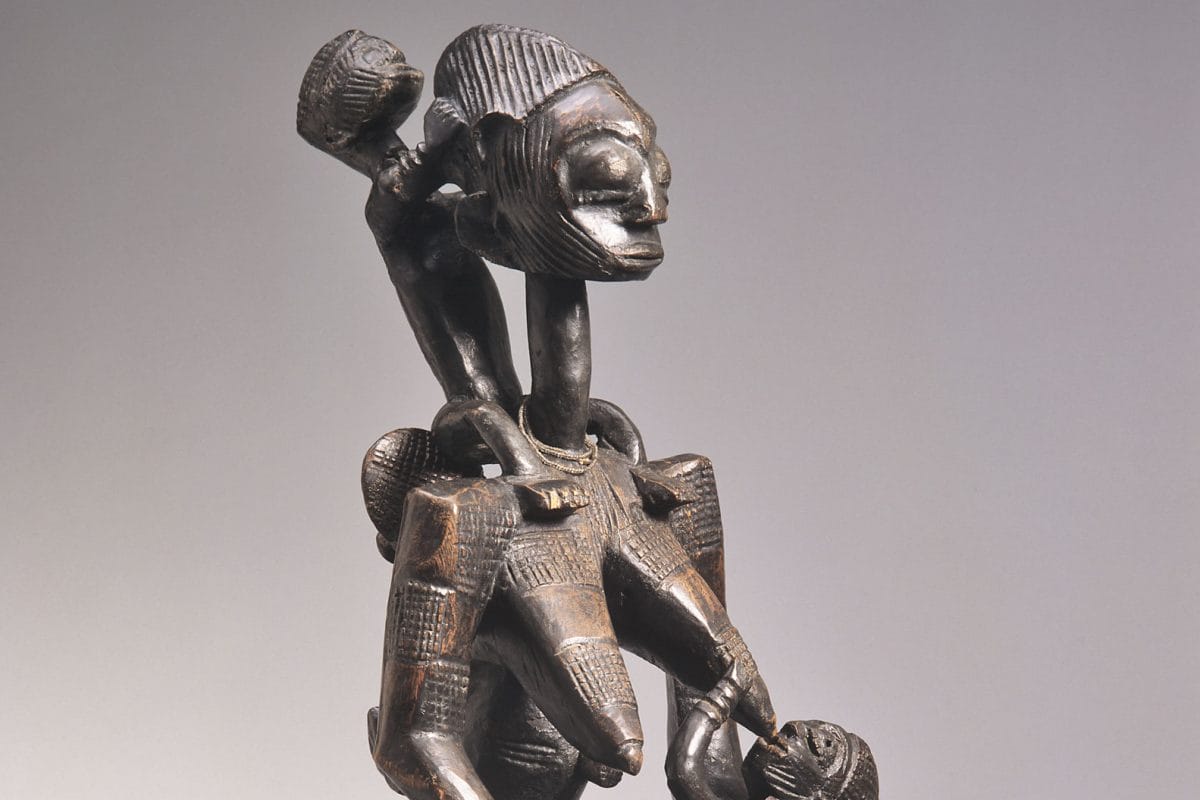
Afo figure, 'ngorongoro'. Seated wooden female suckling a child, with two more on her back.
Perspective:
"I have chosen this object because it reminds me of my three children. My eldest daughter is autistic but that doesn’t change the way I feel about her. I love all my children equally. Autism is a hidden disability, you can’t always tell if someone is autistic. I see this figure and I just see a family and that is what we are. I struggled to select an object because I was looking for something that represented autism. Rachel helped me see that it wasn’t about autism but my role as a mother. That is why I love this object, you can’t see a disability, you just see a family unit. All the children are equal, even though society doesn’t always view autistic people as equal. It is a positive image and highlights the strong bonds and fun that families have regardless of the difficulties." Claire
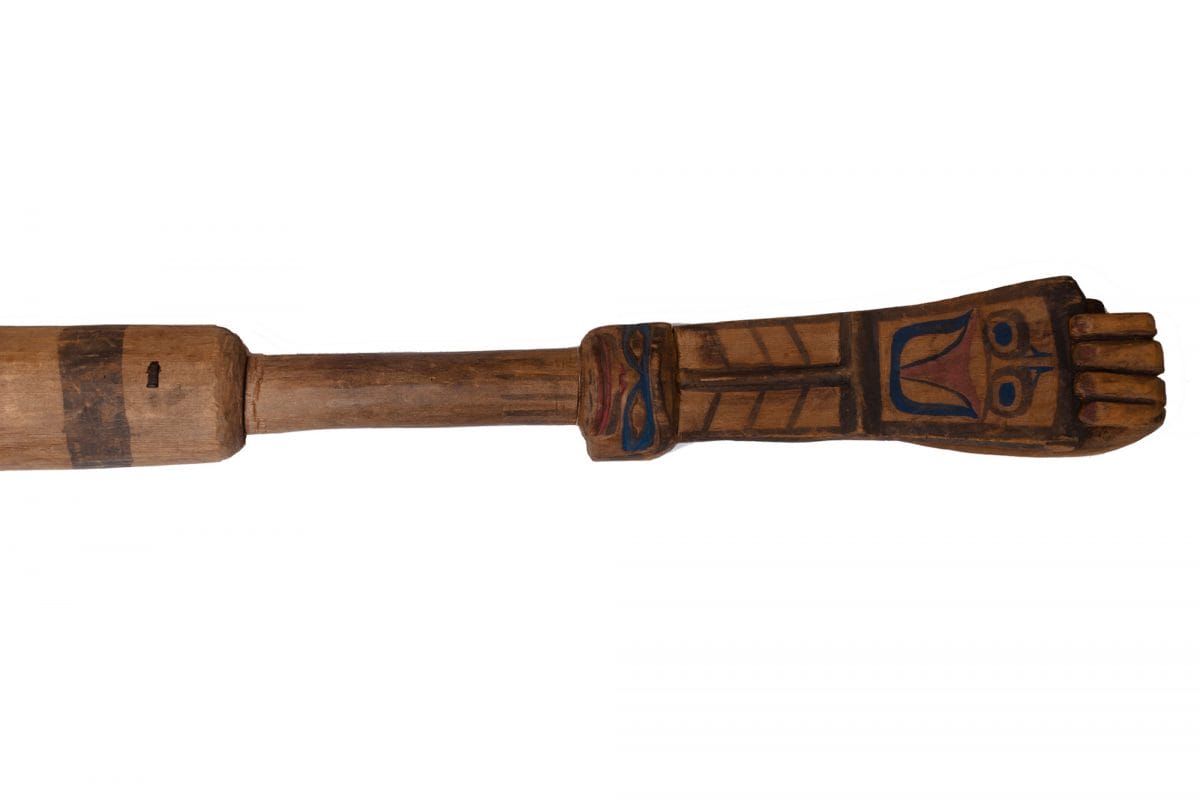
Long baton rattle, used by a dance leader, made of carved and painted wood. The top of the baton is carved in the shape of a hand, holding a panel on which a face is painted.
Perspective:
"Shamanism is a very different way of seeing the world and we should respect that. We should be more neuro-diverse and respect the different neurological ways of understanding the world." Claire
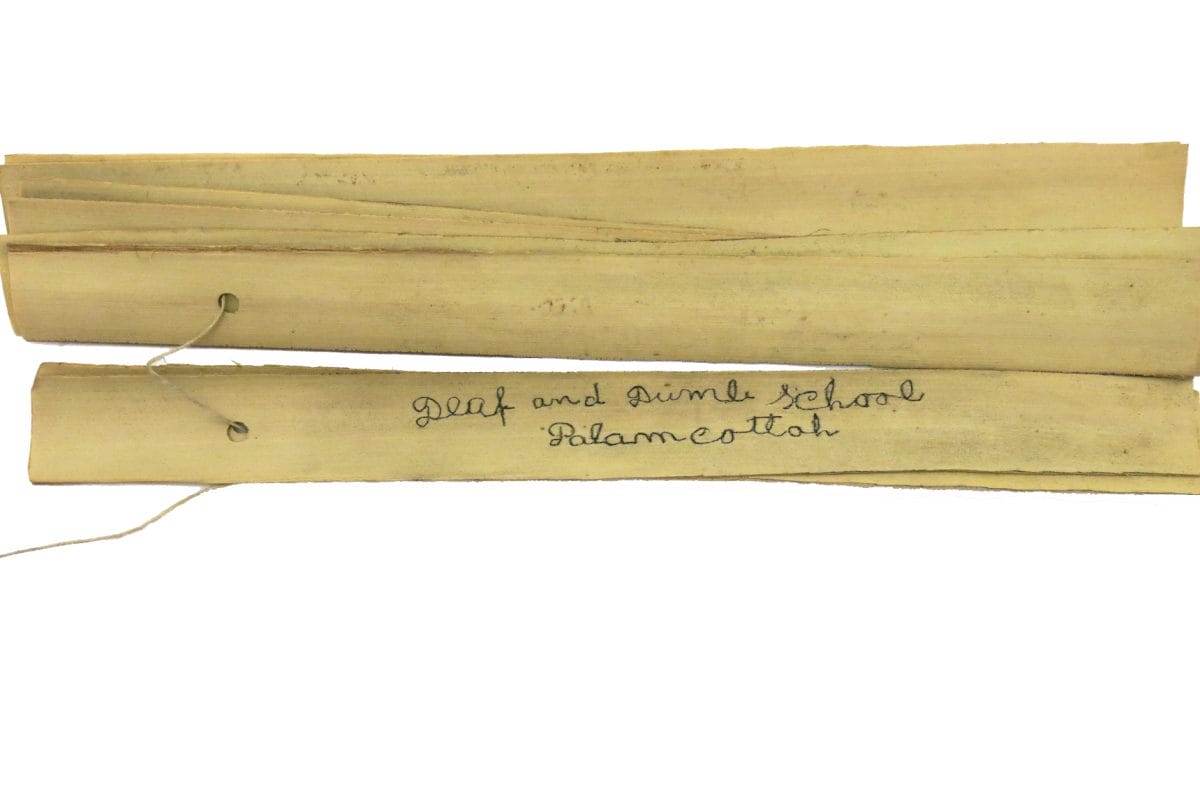
Manuscript of eight palm leaf sections, nearly all in Tamil, but one leaf is inscribed 'Deaf and Dumb School, Palamcottah'. Inscribed on one side only, apart from one which is inscribed on both sides.The palm leaf sections are joined by a fine string passing through a hole at one end of each.
Perspective:
The Palm Book, it could be anything as we don’t know much research, was it a teacher offering instruction and used by students? Education of Deaf focused on writing as communication. But person who wrote this wrote in English – what does the Tamil say?
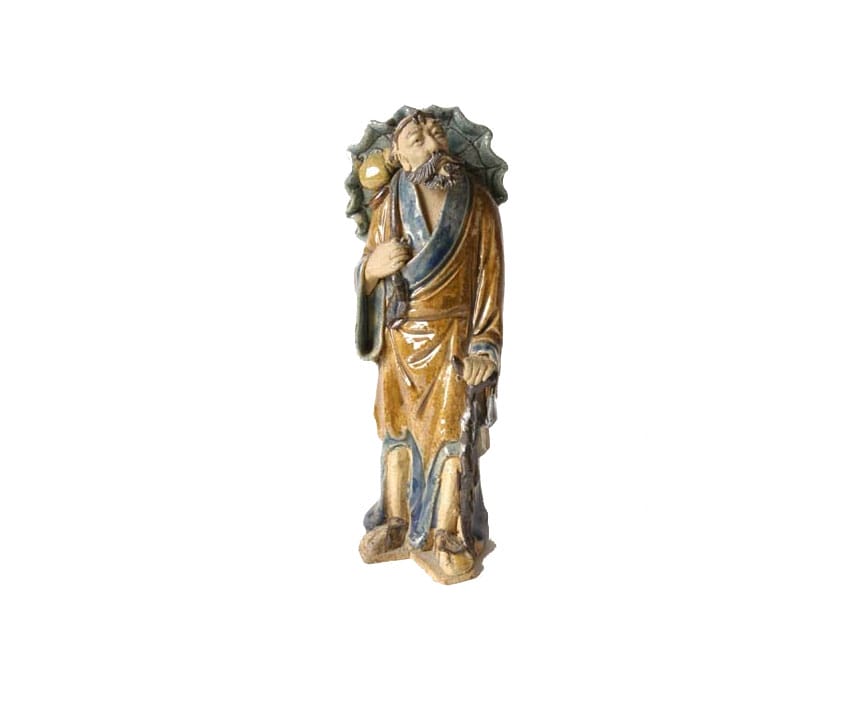
Ceramic figure wearing brown robes, holding a parasol. Represents Li T'ieh-kuai, one of the eight Taoist immortals, a lame beggar with a crutch who carries a gourd.
Perspective:
Taoist figure was good because it showed a disabled god, you can’t get more positive associations than that.
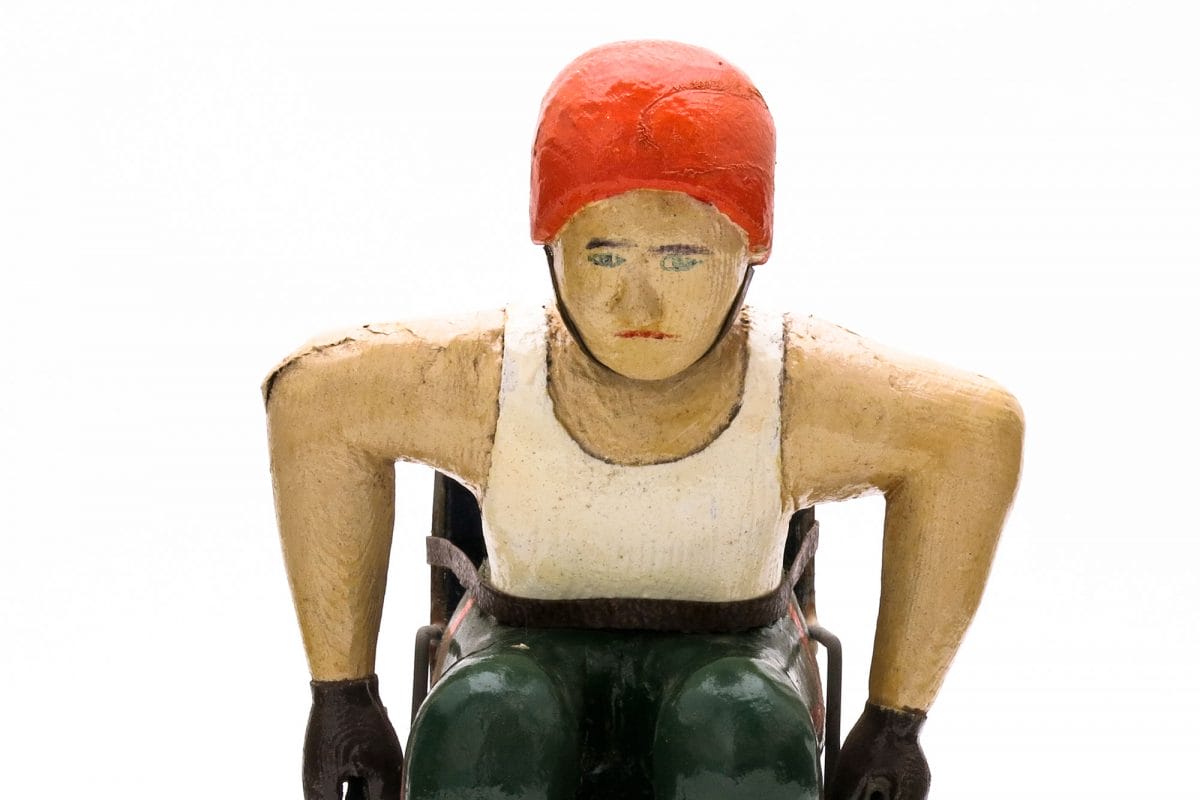
Carved painted wooden figure, on a base, of a male athlete in a wheelchair. He is wearing green trousers, a white vest, an orange helmet, and brown gloves. Both his hands are on the wheels of the wheelchair, which has a brown back and solid yellow wheels.
Perspective:
The wheelchair marathon figure reminds us of the Paralympics and how disabled achievements have come to light. Achievements can come in all shapes and forms. Paralympian – feeling included, being value to society in your own way.
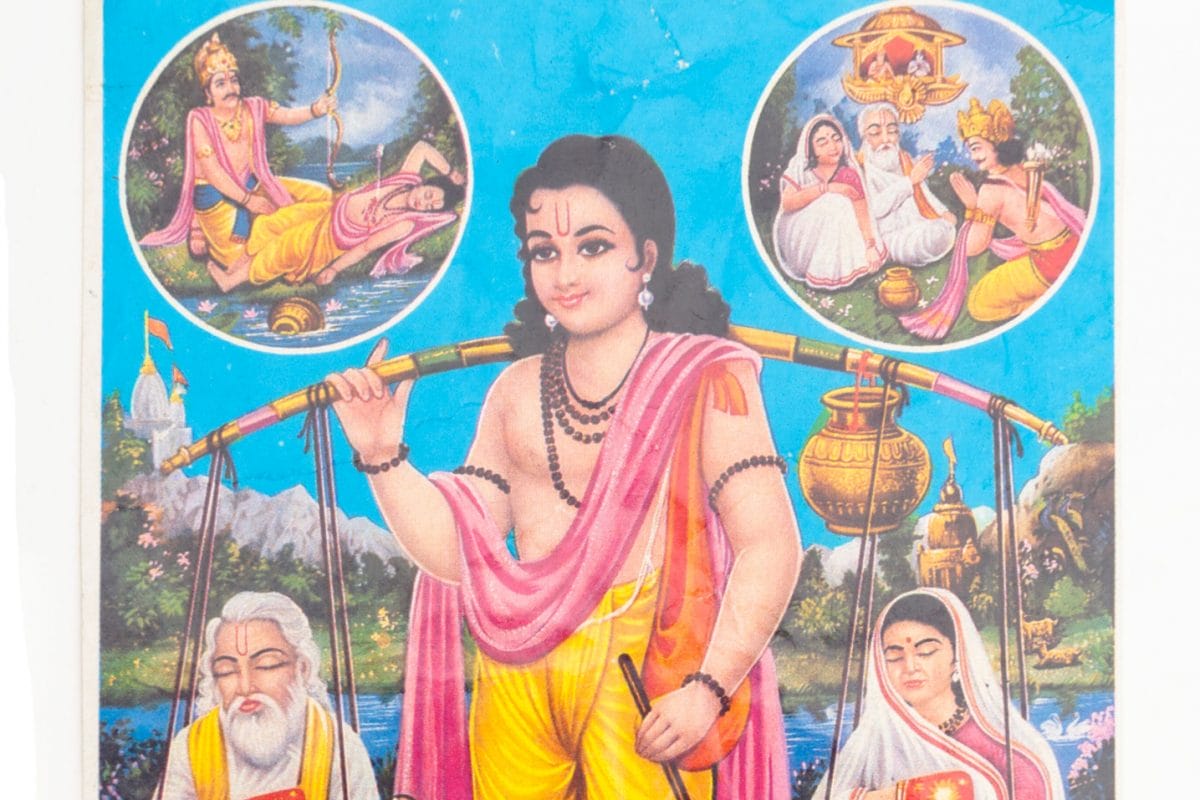
Prayer picture made of paper, entitled Sharwan Kumar. This is a reference to Sharvan Kumar, an ideal son who appears in the Ramayana. Here he is depicted carrying his blind parents on a pilgrimage in two baskets. Above within roundels are depicted later scenes from the story in which King Dasharatha kills Sharwan, having mistaken him for a deer while out hunting, and giving water to Sharwan's two parents as he had requested with his dying breath. Below in two roundels are scenes showing Dasharata's son Rama before he is sent into exile in the forest for fourteen years, and Dasharatha dying of grief for the loss of his son, as Sharwan Kumar's parents had predicted.
Perspective:
"It's about being a good son, being helped and wanting to help. Mum was unhappy about my disability because people made fun. I used to help mum by going shopping for milk and sugar and washing up." William
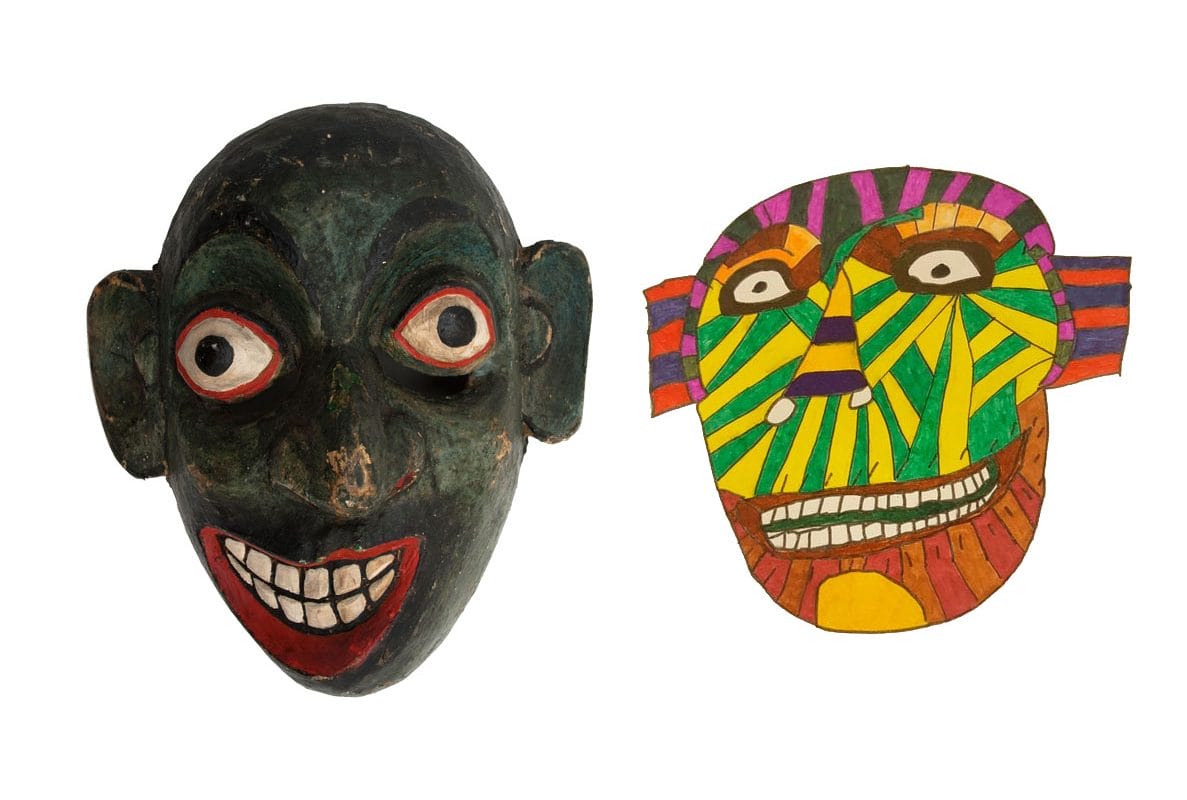
Wooden mask with an oval face, painted dark green, with a bald head and large ears. It has protruding eyeballs, white with black pupils and red rims, and also red nostrils. The mouth has white teeth and red lips, open in a distorted rictus. The mask represents a stroke (hemi plegia) victim. It is used in curing disease, or exorcism.
The paint has flaked on the nose, and there is a piece missing from the top rim. There is a small iron hanging ring on the reverse.
Natasha's drawing of a mask.
Perspective:
"People are scared of the masks like they are scared of us, of me, because of my disability. The masks are happy but as people cannot see me, they are scared because I am hidden behind the mask." Natasha
